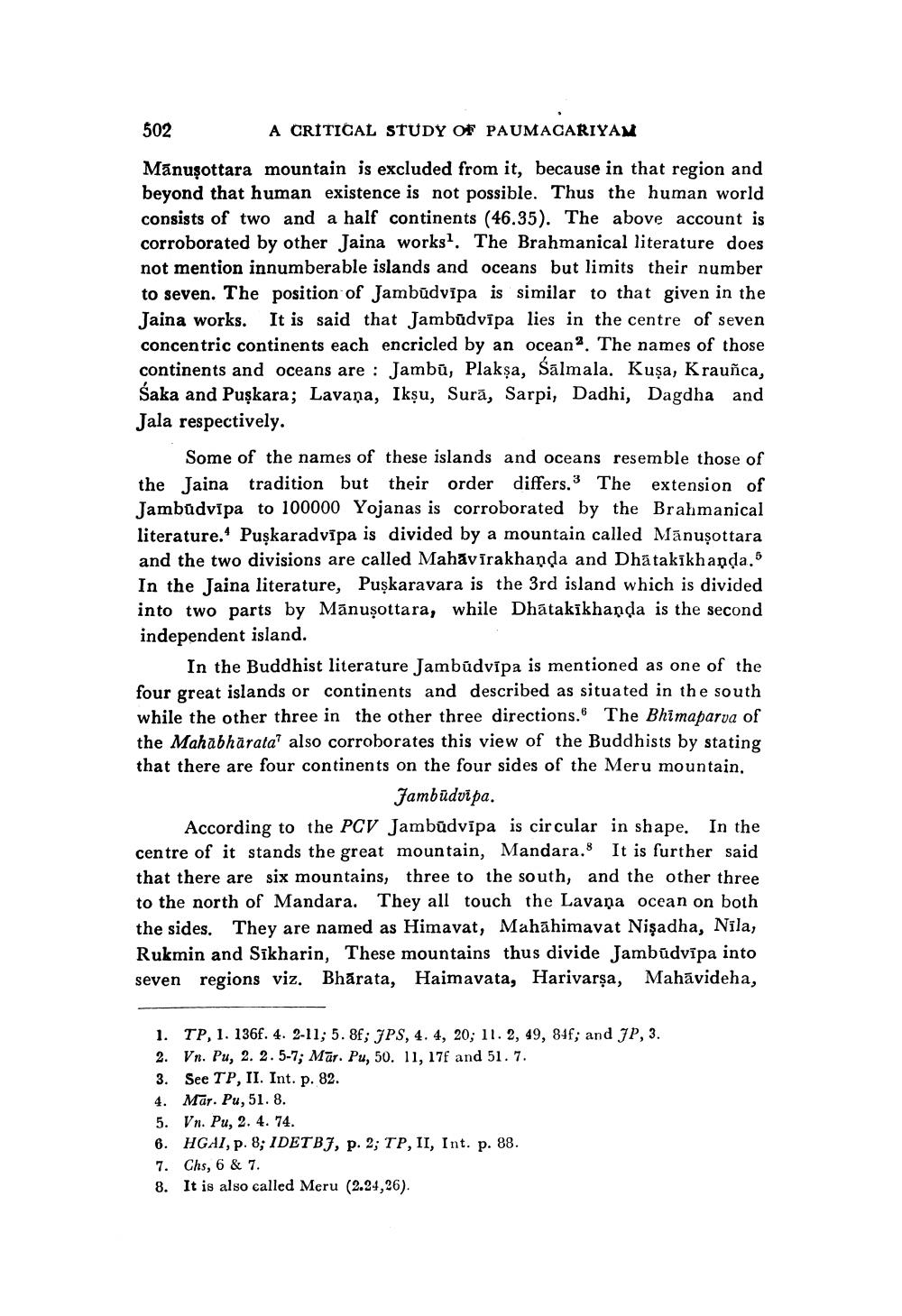________________
502
A CRITICAL STUDY OF PAUMACARIYAM
Mănuşottara mountain is excluded from it, because in that region and beyond that human existence is not possible. Thus the human world consists of two and a half continents (46.35). The above account is corroborated by other Jaina works. The Brahmanical literature does not mention innumberable islands and oceans but limits their number to seven. The position of Jambūdvīpa is similar to that given in the Jaina works. It is said that Jambūdvīpa lies in the centre of seven concentric continents each encricled by an oceana. The names of those continents and oceans are : Jambū, Plakșa, Sālmala. Kuşa, Krauñca, Saka and Puşkara; Lavaņa, Ikşu, Surā, Sarpi, Dadhi, Dagdha and Jala respectively.
Some of the names of these islands and oceans resemble those of the Jaina tradition but their order differs.3 The extension of Jambūdvīpa to 100000 Yojanas is corroborated by the Brahmanical literature. Puşkaradvīpa is divided by a mountain called Mānuşottara and the two divisions are called Mahāvīrakhanda and Dhātakikhanda. In the Jaina literature, Puşkaravara is the 3rd island which is divided into two parts by Mānuşottara, while Dhátakikhanda is the second independent island.
In the Buddhist literature Jambūdvípa is mentioned as one of the four great islands or continents and described as situated in the south while the other three in the other three directions. The Bhimaparva of the Mahābhārata' also corroborates this view of the Buddhists by stating that there are four continents on the four sides of the Meru mountain.
Jambūdvipa. According to the PCV Jambūdvipa is circular in shape. In the centre of it stands the great mountain, Mandara. It is further said that there are six mountains, three to the south, and the other three to the north of Mandara. They all touch the Lavana ocean on both the sides. They are named as Himavat, Mahāhimavat Nişadha, Nila, Rukmin and Sīkharin, These mountains thus divide Jambūdvīpa into seven regions viz. Bhārata, Haimavata, Harivarşa, Mahāvideha,
1. TP, 1. 136f. 4. 2-11; 5. 8f; JPS, 4. 4, 20; 11. 2, 49, 84f; and JP, 3. 2. Vn. Pu, 2. 2. 5-7; Mār. Pu, 50. 11, 17f and 51. 7. 3. See TP, II. Int. p. 82. 4. Mar. Pu, 51. 8. 5. Vn. Pu, 2. 4. 74. 6. HGAI, p. 8; IDETB7, p. 2; TP, II, Int. p. 88. 7. Chs, 6 & 7. 8. It is also called Meru (2.24,26).




